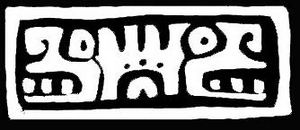Palacio de Ocomo facts for kids
 |
|
| Location | Oconahua, |
|---|---|
| Region | |
| History | |
| Founded | c. 600-700 CE |
| Cultures | El Grillo tradition |
| Site notes | |
| Excavation dates | 2006-present |
| Architecture | |
| Architectural styles | Teotihuacano |
| Restored: April 3, 2006 | |
The Palacio de Ocomo, also known as the Ocomo Palace, is an amazing ancient site in Mexico. It is located in a place called Oconahua in the state of Jalisco. This huge building was first built around 600 to 700 CE, which means it's over 1,300 years old!
The Ocomo Palace was a very important building in ancient Mexico. It was one of the largest tecpans, which is the word for a grand palace or government building. The main part of the palace is about 125 meters (410 feet) on each side. This makes it one of the most impressive ancient palaces ever found in Mexico. It covers an area of about 1,000 square meters (10,764 square feet).
Contents
Where is the Ocomo Palace?
The Ocomo Palace is found in the western part of Mexico. It is in the state of Jalisco, near a modern town called Oconahua. This area was once home to many ancient cultures. The palace is part of a larger archaeological zone. This means there are other old buildings and ruins nearby.
Why was this location important?
Ancient cities were often built in places that were good for farming. They also needed access to water and trade routes. The location of Ocomo likely offered these benefits. It helped the people who lived there to thrive.
Who built the Ocomo Palace?
The people who built the Ocomo Palace belonged to a group called the El Grillo tradition. This culture lived in western Mexico a long time ago. They were skilled builders and artists. They created many impressive structures. The palace shows how advanced their society was.
What was the El Grillo tradition?
The El Grillo tradition was a group of people living in ancient Mesoamerica. They lived in what is now western Mexico. They had their own unique way of life. This included their art, their buildings, and their customs. Archaeologists are still learning about them.
What was the palace used for?
The Ocomo Palace was likely the main building for the rulers of the area. It was a place where important decisions were made. It might have been used for meetings and ceremonies. It was also probably the home of the most powerful people.
A center of power and culture
As a tecpan, the Ocomo Palace was a symbol of power. It showed the strength of the rulers. It was also a place for cultural events. People might have gathered there for festivals or religious rituals. It was the heart of their community.
How big is the Ocomo Palace?
The Ocomo Palace is truly massive. It measures 125 meters (about 410 feet) on each side. Imagine a building that is longer than a football field! This huge size made it stand out. It was much bigger than most other buildings of its time.
Why is its size special?
Its large size makes it unique among ancient Mexican palaces. It shows that the people of Ocomo had great building skills. They also had enough people and resources to build such a huge structure. It was a major achievement for them.
Discovering the Ocomo Palace
Archaeologists started working at the Ocomo Palace in 2006. They have been carefully digging and studying the site ever since. Their work helps us learn about the past. They uncover clues about how people lived long ago.
What do archaeologists do?
Archaeologists are like detectives of the past. They dig up old buildings and objects. They study these finds to understand ancient cultures. Their work at Ocomo helps us piece together the history of the El Grillo tradition. They also help to preserve these important sites.
Life in Ancient Ocomo
Imagine what life was like around the Ocomo Palace. People would have lived in homes nearby. They would have farmed the land to grow food. The palace would have been a busy place. People would come and go for various reasons.
Daily life around the palace
The palace was a central point for the community. People would have traded goods in markets. They would have celebrated important events. Children would have played in the streets. Life revolved around the palace and its powerful leaders.
See also
 In Spanish: Palacio de Ocomo para niños
In Spanish: Palacio de Ocomo para niños


